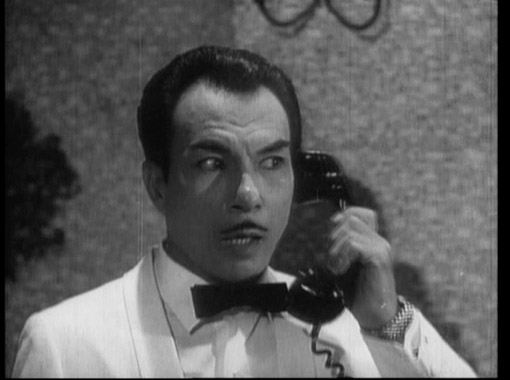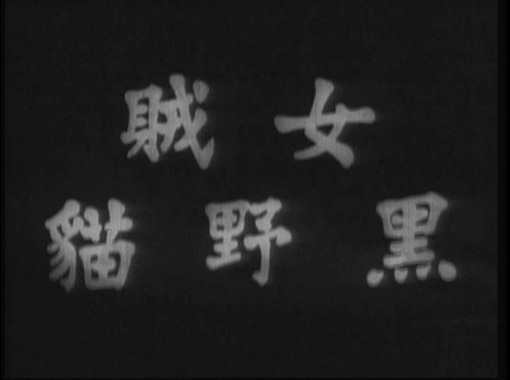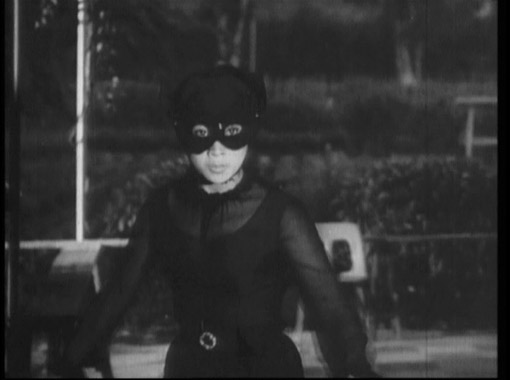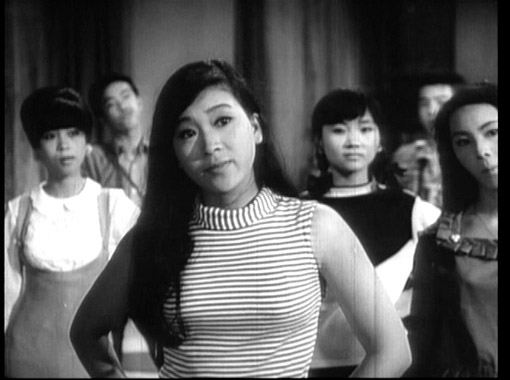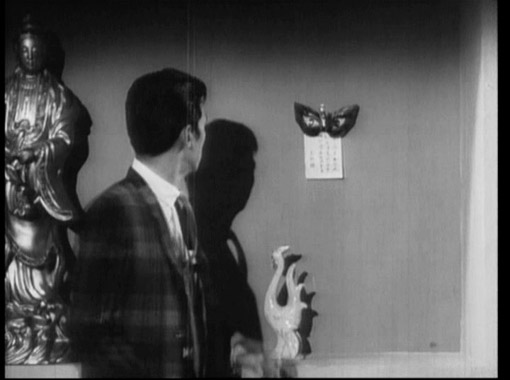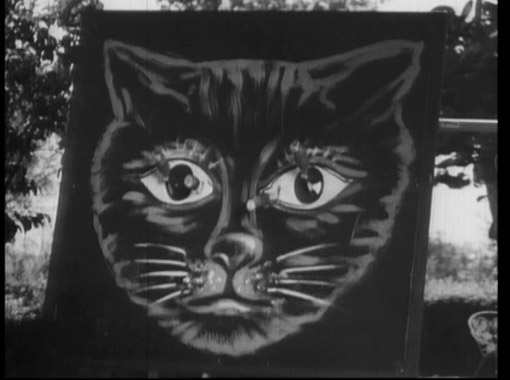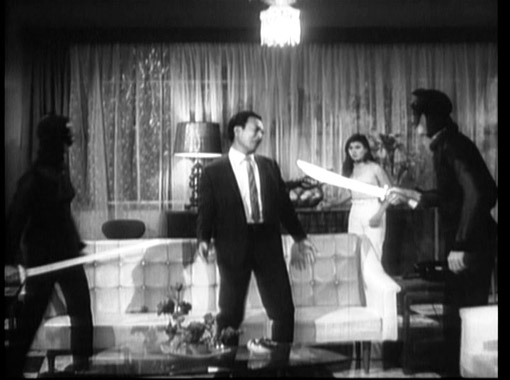[adrotate banner=”1″]One famous set of films from the heyday of Cantonese cinema is the Buddha’s Palm series of films, the main four parts were released in 1964 as Buddha’s Palm Part 1-4. (They are also known as The Young Swordsman Lung Kim-fei Part 1-4)
Starring Walter Tso Tat-wah as Lung Kim-fei and Yu So-chau as Kau Yuk-wah (mentioned because they reprise the roles in The Furious Buddha’s Palm, the 1965 film we are reviewing and thus inspiring this companion article!)
The Buddha’s Palm films are based on Shangguan Hong’s serial novel ‘Thousand Buddha’s Palm’ that was printed in ‘Ming Pao Daily News’. Series director Ling Wan went on to direct the three followups The Furious Buddha’s Palm (1965), Buddhist Spiritual Palm (1968), and Buddhist Spiritual Palm Returned (1968).
The first four parts all in 1964
—-
Buddha’s Palm Part 1
Lung Kim-fei is disfigured and abandoned by his female junior disciple before running into an ambush sprung by her husband Auyeung Ho. The mythical condor of Wicked God of Fiery Cloud, Ku Hon-wan, flies the man in distress to safety. The master imparts his adopted son the skill of the Buddha’s Palm. A vicious duel six decades ago with Suen Bik-ling, dubbed the Capricious Flying Ring, left both challengers blind. To pay his debt of gratitude, Lung sets out to obtain the cure—treasure of the golden dragon—and wrestles to save Suen’s granddaughters Kau Yuk-wah and Yuk-kuen who come under the attack of a unicorn while seeking the cure. The unicorn blood that splashes onto his face miraculously restores his features. Taking a detour back, Lung chances on But Ku, the helmsman of the Cheung Lei Sect, who teaches the gifted young man the invincible Seven Spinning Gash. Regaining his eyesight, Ku instructs his disciple to return the treasure when he again runs into the sisters and offers aid to help Luk Yu to sever ties with a cult faction. Suen sees, to her shocked dismay, the Fiery Cloud armour that Lung is wearing and strikes him down with a lightning bolt.
—-
Buddha’s Palm Part 2
Distressed by her sister Yuk-wah’s sacrifice for lover Lung Kim-fei, Kau Yuk-kuen pacifies their granny Suen Bik-ling with the scheme to lure out Wicked God of Fiery Cloud, Ku Hon-wan, using Lung as bait while devising a strategy with Luk Yu. The duo secure help from But Ku in their rescue plan but before they can reach Lung, he has already broken free despite sustaining an injury. Garbed in the Fiery Cloud armour, Yuk-kuen beguiles the guards into a futile chase but is struck down the cliffs by the elder. The mythical condor delivers her to Ku who takes her in as his foster daughter. Luk, however, is captured by Twin Talents of Kunlun. Having perfected four styles of the Buddha’s Palm, Yuk-kuen is aided by Yuk-wah and Lung to rescue Luk. Suen follows on their heels and allies with other adversaries to subdue the disciple with the Capricious Flying Ring. The master administers the ninth style of the Buddha’s Palm, ‘Ten Thousand Buddhas Paying Court’ to defeat his bitter foe and lays their feud to rest.
—-
Buddha’s Palm Part 3
Lung Kim-fei and Kau Yuk-wah seal their nuptials following the reconciliation between their masters, Ku Hon-wan and Suen Bik-ling, but the auspicious day is marred by the assassination of Suen. Eager for revenge, Kau Yuk-kuen visits Ten Thousand-hand Lohan who reveals the killing weapon to be a silver thunderbolt shuttle and supplies a list of martial arts suspects. On her way to track down Lau Piu-piu, the helmswoman of Heavenly Fragrance Sect, Yuk-kuen is abducted by Auyeung Ho and the protege of the Three Invincible Palm. It is learned that Lau and the deceased are sworn sisters and the real culprit is still at large. Ku follows the leads which reveal the murderer to be the Three Evils, Auyeung’s conspirators, and apprehends the trio with the Buddha’s Palm. Nursing a wound inflicted by Auyeung in an intrigue, Ku flees into a temple where he imprints the ninth style of the Buddha’s Palm onto six tripods to bequeath to his protege with the enemies hot in pursuit.
—-
Buddha’s Palm Part 4
Kau Yuk-kuen is delivered to safety by the mythical condor with one of the tripods while her foster father, Ku, continues the fight until his last breath. The Three Evils brutally beat and cripple Auyeung to intercept his scheme to appropriate the tripods but fail to prevent him from shoving two of them down into the deep valleys in frustration. Finding themselves no match for the Three Devils, the fellowship seek help from Lau Piu-piu. But the master declines out of a grudge against Suen Bik-ling with whom she was locked in a bitter love triangle which resulted in disfigurement of her face. Undaunted, they embark on a perilous journey in quest of the tongue of a mythical dragon and eyes of a crimson python for her cure. Meanwhile, Kau Yuk-wah has retrieved the two tripods from the deep valleys. Lau engages the Three Devils in battle while the sisters recover the remaining three tripods. Nonetheless, the missing palm print on the last tripod baffles Lung Kim-fei. As the Three Devils overwhelm Lau and But Ku to clinch the tripod, Lung shatters the vessel to find the palm imprint inside and vanquishes the devils with the ninth style of the Buddha’s Palm.
—-
Three cool images of Buddha’s Palm Part 2 from HKMDB
Bird Guy:

Metal Dude:

Robot Kung Fu?!?!:

Buddhist Spiritual Palm (1968), and Buddhist Spiritual Palm Returned (1968) have nothing at all written about them except a few almost blank database entries. I didn’t even find any surviving ads. They don’t seem to star Walter Tso Tat-Wah, so I am not sure how they are related.
The 1982 Shaw Brothers film Buddha’s Palm even had Walter Tso Tat-Wah as the older master who passed on the scroll about the Buddha’s Palm that eventually resurfaced and started the film going crazy. I haven’t seen this one, but here are some reviews of it: Teleport City, LoveHKfilm

